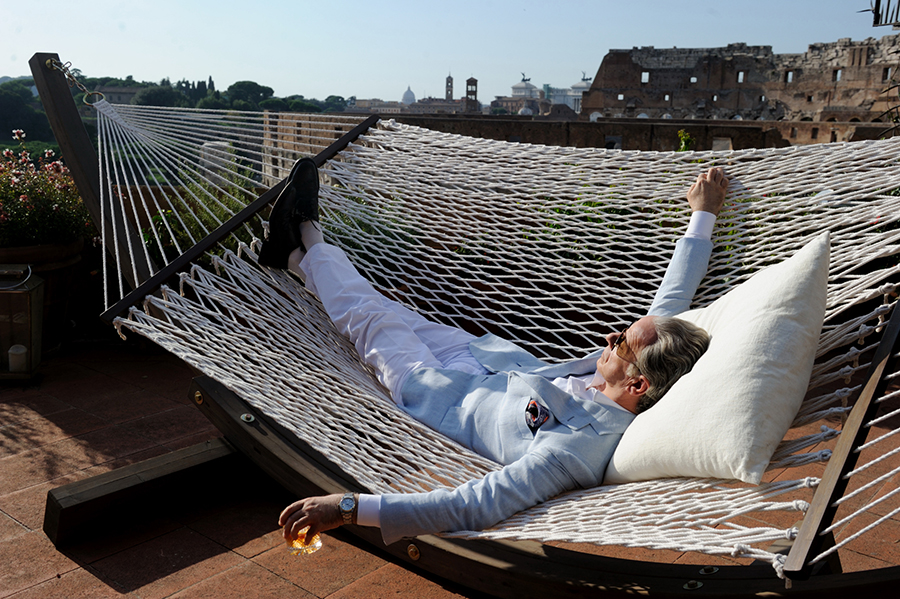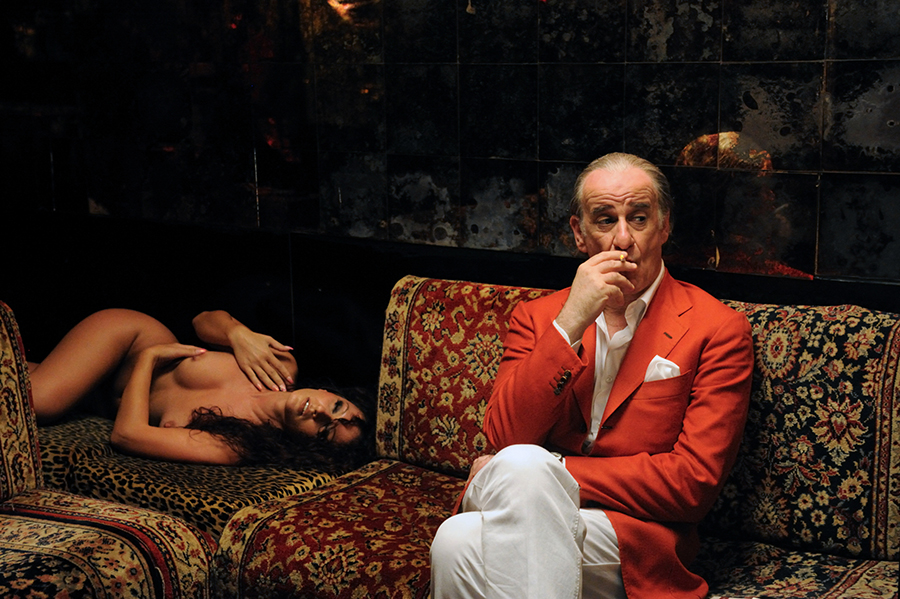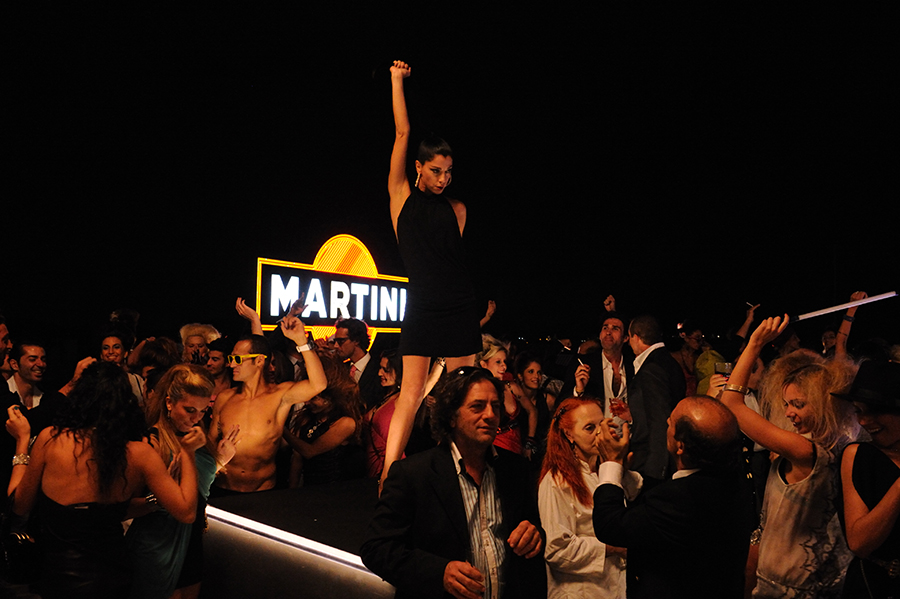“The ideal way to see Rome . . . is through two pairs of eyes, one pair that knows it exceedingly well . . . and one that sees it for the first time, wide-eyed, open to life” (Federico Fellini, I, Fellini, 122).

Let me say up front that I love Paolo Sorrentino’s new film, The Great Beauty, our Jan. 10 movie. I saw it once and felt compelled to see it again just days later, and I expect it will be a film that I return to often, if not on a literal screen, then on my individual mind-screen, where indelible images from Fellini flicker too. For me, watching The Great Beauty was an experience both exhilarating and mournful, stunning and repellent.
As so many critics have already remarked, Sorrentino’s film is a contemporary reworking of La Dolce Vita — like its predecessor, brimming with eccentric and extravagant images. But Sorrentino’s vision of “the sweet life” achieves an even finer balance of caustic satire and decaying beauty than did Fellini’s landmark film from 1960, in which scorn for the decadent society overshadows any allure it might have. That said, the decadence in The Great Beauty is even more grotesque and perverse than that depicted in La Dolce Vita. And, thus, to balance the profound ugliness, the beauty must indeed be great.
Whereas La Dolce Vita opens with a statue of Christ hauled by helicopter to St. Peter’s Square, the first image from The Great Beauty is the gaping muzzle of a cannon before firing. A somber tourist reads the inscription at the Independence War Memorial, “Roma o Morte,” commemorating Italian patriots. A burly man washes himself in the water of Il Fontanone; another swears to someone on his cellphone. Japanese tourists learn about the construction of the fountain from a tour guide, while a women’s choir performs a cappella in the arch above them. One tourist leaves the group, crossing the street to photograph Rome’s cityscape. After snapping his last photo, he collapses. Like Fellini’s audiences, we are left to interpret the symbols for ourselves.

Differences between the films’ protagonists may hold the answers. Both characters have been seduced by “the high life.” Marcello Rubini of La Dolce Vita (played by the incomparable Marcello Mastroianni) is a young journalist who runs with the paparazzi; Jep Gambardella from Sorrentino’s film (played flawlessly by veteran actor Toni Servillo, perhaps best known in the U.S. for his performance as a Camorra functionary in Gommorrah from 2008), is a 65-year-old celebrity journalist, whose reputation rests upon a single novel penned decades ago.
However world-weary and cynical, even mean-spirited to “friends” for their self-delusions, Jep is a more sympathetic character than Marcello. Both are indolent and joyless, but Jep possesses greater self-awareness than Marcello and reaches a sorrowful epiphany by the film’s end. In contrast, Marcello learns very little about himself or his society, though his nihilism does deepen at the end: Not only does he give up his aspirations to be a serious writer, but he abandons his sordid journalism for something he holds in even greater contempt—writing publicity releases for celebrities. More importantly, he cannot communicate or connect with the film’s one hopeful and innocent character, the “angel” on the beach.

Given the Fellini-esque tradition that Sorrentino has taken up, where the boundaries between reality, memory, and dreams disappear, surely viewers may be forgiven this imagined confluence. So, if you find yourself mesmerized by The Great Beauty, seek out Fellini’s masterworks, most of which are part of the Criterion Collection. Then you, too, may be seeing double.
John Moses teaches Film Studies and English at Fresno City College. He serves on the Filmworks board as Program Director.
